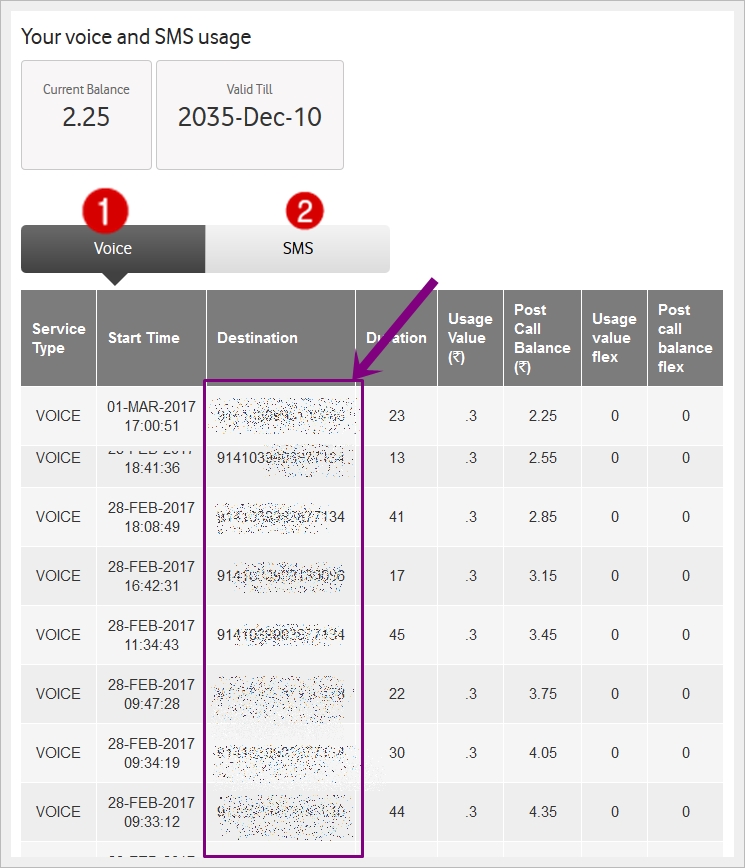

In a decentralised model of MNP, an FNR (flexible number register) may be used to manage a database of ported out/ported in numbers for call routing. On 8 July 2010, Ofcom issued a final statement, retaining the donor-led process, mandating a two-hour PAC release time, and reducing the porting time from two to one working day. However, in early 2008 Vodafone UK appealed the Ofcom statement before the Competition Appeal Tribunal (CAT), and on 18 September 2008, CAT ruled in favor of the appeal, returning the matter back to Ofcom for reconsideration. On 29 November 2007, Ofcom completed a round of consultations on further reduction of porting time to 2 hours along with recipient-led porting and mandated that near-instant (no more than 2 hours) recipient-led porting be implemented by no later than 1 September 2009.

On 17 July 2007, Ofcom released its conclusions from the review of the UK MNP and mandated reduction of porting time to 2 working days effective 1 April 2008. Prior to March 2008, it took a minimum of 5 working days to port a number in the UK, compared to 3.5 working days in Pakistan, 2 hours in United States, as quickly as 20 minutes in the Republic of Ireland, 3 minutes in Australia, and a matter of seconds in New Zealand. The UK telecoms regulator Ofcom completed its extended review of the UK MNP process on 29 November 2007, and mandated that ACQ/CDB be implemented for mobile to mobile ported calls by no later than 1 September 2009. Because of its donor dependent nature, indirect routing also means that if the donor network develops a fault or goes out of business, the customers who have ported numbers out of that network will lose incoming calls to their numbers. This is also known as "indirect routing" and is highly inefficient as it is wasteful of transmission and switching capacity. One of the very few countries not to use ACQ/CDB is the UK, where once a number has been ported, calls to that number are still routed via the donor network. A majority of the established and upcoming MNP systems across the world are based on this ACQ/CDB method of call routing. According to RFC3482, this is also known as All Call Query (ACQ) and is highly efficient and scalable. A network operator makes copies of the CDB and queries it to find out to which network to send a call. There are various flavours of call routing implementation across the globe but the International and European best practice is via the use of a central database (CDB) of ported numbers. ( April 2014) ( Learn how and when to remove this template message)Ī significant technical aspect of MNP is related to the routing of calls or mobile messages ( SMS, MMS) to a number once it has been ported. Unsourced material may be challenged and removed. Please help improve this article by adding citations to reliable sources. This section needs additional citations for verification. This might lead to distortion of competition, especially in the markets with new entrants that are yet to achieve scalability of operation. It has also been observed that it may act as customer deterrent as well as allowing the donor an opportunity of "winning back" the customer.

This form of porting is known as "donor-led" and has been criticised by some industry analysts as being inefficient, though it prevents MNP scams. The recipient continues the porting process by contacting the donor with a porting code.
#Vodafone call details software free download code#
In the case of a donor-led system, the customer wishing to port their number is required to contact the donor to obtain a Porting Authorisation Code (PAC) in the UK- or a Unique Porting Code (UPC) in India -which is then given to the recipient network. By contrast, the UK and India are the only exceptions to implement a "donor-led" system. This is known as "recipient-led" porting. The International and European standard specifies that a customer wishing to port their number contact the new network (recipient), which then sends the number portability request (NPR) to the current network (donor). Mobile number portability is implemented in varying ways across the globe. ( December 2019) ( Learn how and when to remove this template message) Please help improve it to make it understandable to non-experts, without removing the technical details. This article may be too technical for most readers to understand.


 0 kommentar(er)
0 kommentar(er)
